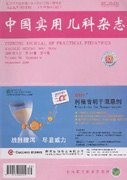The virus is a major pathogen of respiratory tract infection in children. Detection of viral etiology of respiratoty illnesses can provide valuable information to direct the management of patients over the different clinical manifestations. The procedures of the collection,transport and processing of specimens is the most error-prone parts in microbiological testing. Clinicians also lack sufficient understanding of the procedures and clinical value for respiratory virus detection. The paper covers the main content of Advice on Collection,Transport and Detection of Microbiological Testing Specimen in Children with Respiratory Infection(Focusing on Virus),the importance and problems involved in specimen collection,laboratory testing of respiratory viruses,and interpretation of the results.

